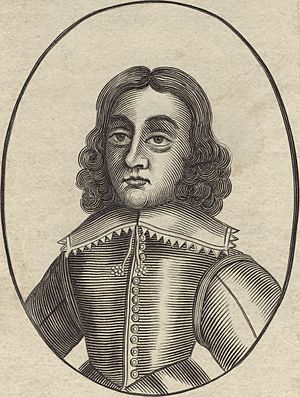James Hind facts for kids
Quick facts for kids
James Hind
|
|
|---|---|
 |
|
| Born | c. 1616 |
| Died | 1652 |
| Cause of death | Executed by hanging |
| Other names | John Hind |
| Occupation | Highwayman |
| Parent(s) | Roger Kynaston and Elizabeth Grey |
| Conviction(s) | Murder |
| Criminal charge | Treason |
| Penalty | Executed by hanging |
James Hind (also known as John Hind) was an English highwayman and a supporter of the King during the English Civil War. He was born around 1616 and died in 1652. He became famous for his daring acts and was seen by many as a hero, much like the legendary Robin Hood.
Who Was James Hind?
James Hind was born in a town called Chipping Norton in Oxfordshire, England. He lived during a very turbulent time in English history, known as the English Civil War. This was a big fight between those who supported the King (called Royalists) and those who supported Parliament (called Parliamentarians or Roundheads).
Hind was a strong supporter of the King's side. He even fought in battles for the Royalist cause. Some stories say he helped King Charles II escape after a major defeat at the Battle of Worcester.
A Royalist Highwayman
After the war ended, James Hind became a highwayman. A highwayman was someone who robbed travelers on roads, often on horseback. But Hind wasn't just any robber. He mainly targeted people who supported the Parliament, especially those who were part of the new government called the Commonwealth.
His adventures were often written about in small books called pamphlets. These stories, some true and some exaggerated, made him a folk hero for people who still supported the King. They saw him as a "Robin Hood" figure because he seemed to take from the rich Parliamentarians and sometimes even helped poor Royalists.
Hind and his partner, Thomas Allen, once tried to rob Oliver Cromwell, who was a very powerful leader of the Parliamentarians. They didn't succeed, and Allen was caught. Hind also managed to rob John Bradshaw, who was the judge in the trial of King Charles I. Interestingly, Hind refused to rob anyone who supported the King and even gave money to Royalists who were struggling.
Capture and Trial
Eventually, during a period known as The Protectorate, James Hind was captured. One of his own friends told the authorities where to find him. Instead of being charged with just highway robbery, Hind was accused of treason. Treason is a very serious crime against the government or the ruler of a country. He was charged with treason because of his strong loyalty to the King and his actions against the Commonwealth.
In 1652, James Hind was put to death in Worcester. He was executed by hanging.
A Folk Hero
Even after his death, James Hind remained a popular figure. A book about his life, called The English Gusman, was written in 1652. Many other pamphlets also told stories of his adventures. He became a legend, remembered as a daring highwayman who stood up for the King during a time of great change in England.

